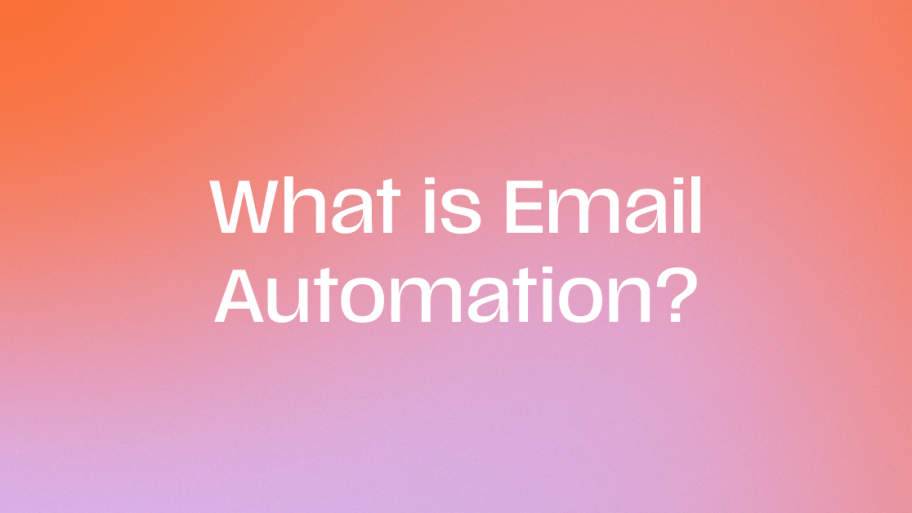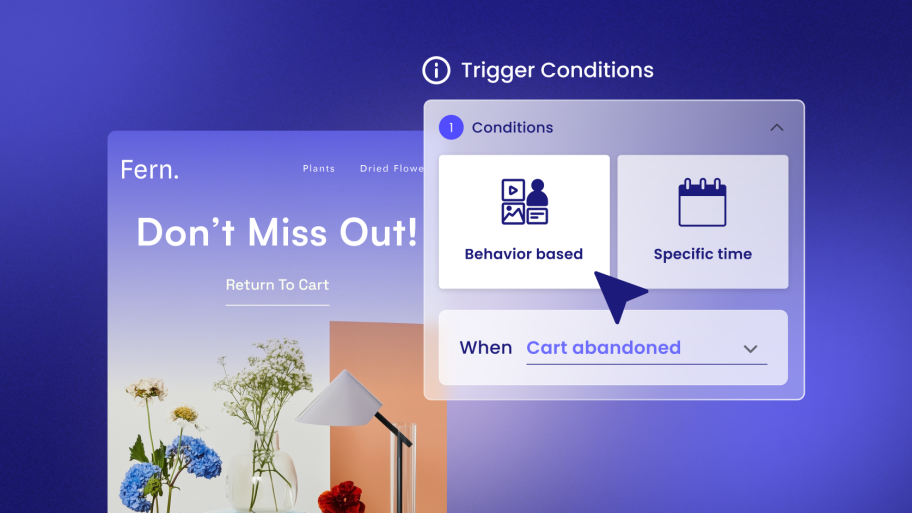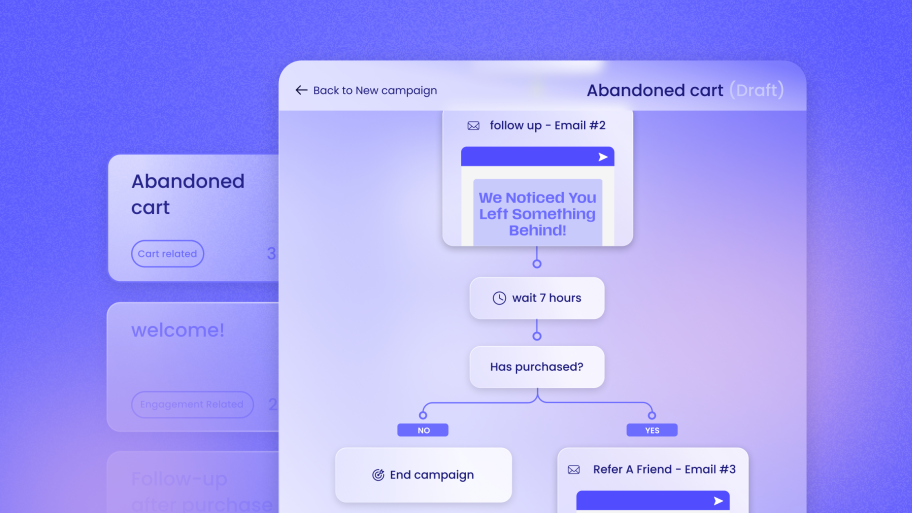Key Takeaways
- Native Integration is Key: A truly WordPress-native plugin like Send by Elementor offers the most seamless experience, eliminating the common headaches of API conflicts, data syncing issues, and a disjointed user interface that plagues third-party solutions.
- Look for an All-in-One Toolkit: The most efficient solutions combine email, SMS, automation, segmentation, and analytics into a single platform. This consolidation reduces plugin bloat, simplifies your workflow, and provides a unified view of your marketing efforts.
- Automation Drives Growth: Powerful automation features, such as abandoned cart recovery, welcome series, and re-engagement campaigns, are no longer optional. They are essential for nurturing leads and maximizing revenue with minimal manual effort.
- Focus on Business Value: The best plugin for you is one that not only sends emails but also demonstrates clear ROI. Look for tools with built-in analytics that connect your marketing activities directly to revenue and customer retention.
- Ease of Use Matters: A complex tool that you can’t figure out is useless. Prioritize plugins with intuitive interfaces, drag-and-drop builders, and pre-built templates that allow you to get campaigns running quickly, without a steep learning curve.
Why Your WordPress Site Needs a Dedicated Newsletter Plugin
Before we dive into the specific tools, let’s establish why this is so critical. You’ve spent countless hours building a beautiful, functional WordPress website. People are visiting, browsing, and hopefully, buying. But what happens after they leave? For most, the connection is lost. This is where a newsletter plugin comes in.
It’s more than just an email-sending tool; it’s a bridge between your website and your audience. It allows you to:
- Capture Leads: Turn casual visitors into loyal subscribers using forms and lead generation tools.
- Build Relationships: Consistently deliver value, share updates, and tell your brand’s story directly in your audience’s inbox.
- Drive Traffic and Sales: Announce new products, promote sales, and bring subscribers back to your site with targeted calls to action.
- Own Your Audience: Unlike social media, where algorithms dictate your reach, your email list is an asset you control completely.
The challenge, however, is that many solutions require you to juggle multiple platforms. You might use one plugin for forms, another service for email sending, and a third to sync your customer data. This creates a fragmented, inefficient, and often frustrating experience. The ideal solution lives where you work: right inside WordPress.
1. Send by Elementor: The WordPress-Native Communication Toolkit
Send by Elementor is not just another newsletter plugin; it’s a comprehensive communication toolkit built from the ground up for WordPress. This distinction is crucial. While other tools are external services retrofitted to work with WordPress, Send was born in the ecosystem. This native approach solves many of the core pain points that web creators and business owners face with traditional email marketing platforms. It’s designed to feel like a natural extension of your website, not a clunky add-on.
At its core, Send consolidates all the essential marketing channels—Email, SMS, Automation, and Analytics—into one seamless interface within your WordPress dashboard. This eliminates the need for complex integrations, third-party connectors like Zapier, or the constant worry of data not syncing correctly between your WooCommerce store and your marketing platform.
Key Strengths and Value Proposition
The primary value of Send lies in its effortless integration and all-in-one functionality. It’s designed specifically for web creators who want to offer more value to their clients and for business owners who need powerful marketing tools without the traditional complexity.
- Truly WordPress-Native: This is Send’s most significant advantage. Everything happens inside your WordPress admin area. The user interface is familiar, management is straightforward, and you don’t have to worry about plugin conflicts or site slowdowns caused by external scripts. Your WooCommerce customer data, form submissions, and contact lists are all in one place, updated in real-time.
- Unified Communication Toolkit: Send brings together the most important marketing tools under one roof.
- Email Marketing: Design beautiful, responsive emails with a drag-and-drop builder and ready-made templates inspired by Elementor’s design principles.
- SMS Marketing: Engage customers with timely text messages for promotions, order updates, or abandoned cart reminders.
- Marketing Automation: This is where Send truly shines. It comes with pre-built automation flows for common scenarios like Abandoned Carts, Welcome Series, and Customer Re-engagement. You can set these up once and let them work for you, nurturing leads and recovering sales 24/7.
- Seamless WooCommerce Integration: For e-commerce sites, this is a game-changer. Send automatically syncs with your WooCommerce store, allowing you to segment your audience based on purchase history, spending habits, and engagement. You can easily target high-value customers, win back lapsed ones, or create post-purchase follow-up sequences.
- Actionable, Real-Time Analytics: How do you know if your marketing is working? Send provides clear, demonstrable ROI by tracking how your email and SMS campaigns translate into actual revenue. The analytics dashboard is built right into WordPress, so you can see your performance at a glance without logging into another platform.
- Empowerment for Web Creators: Send was built with freelancers and agencies in mind. It provides an opportunity to expand service offerings beyond just building websites. By managing a client’s email and SMS marketing, creators can establish long-term partnerships and build recurring revenue streams, all while delivering tangible growth for their clients.
How It Works: A Practical Overview
Getting started with Send is designed to be intuitive. After installing the plugin, you can immediately begin importing contacts or connecting it to your existing forms (like Elementor Forms).
The drag-and-drop email builder makes campaign creation simple. You can choose from a library of professional templates or build your own from scratch. The editor is clean and responsive, ensuring your emails look great on any device.
Setting up an automation flow is just as easy. For example, to activate the Abandoned Cart flow for your WooCommerce store, you simply enable the pre-built template. Send will automatically track shoppers who add items to their cart but don’t complete the purchase and send them a series of timed reminders. You can customize the content of these emails and SMS messages to match your brand voice.
Audience segmentation is another powerful feature. You can create dynamic segments of your audience based on criteria like:
- “Customers who have spent more than $200”
- “Subscribers who have not opened an email in the last 90 days”
- “Shoppers who purchased a specific product”
This allows you to send highly targeted, relevant messages that are far more effective than generic email blasts.
Who Is Send by Elementor Best For?
Send is the ideal solution for:
- WooCommerce Store Owners: The deep integration with WooCommerce for automation and segmentation makes it an indispensable tool for driving sales and customer retention.
- Web Creators, Freelancers, and Agencies: It provides a simple yet powerful way to add marketing services to their portfolio, creating a new source of recurring revenue and strengthening client relationships.
- Business Owners Who Value Simplicity: If you want powerful marketing automation without the steep learning curve and integration headaches of platforms like Mailchimp or Klaviyo, Send offers a refreshingly straightforward alternative.
- Anyone Looking for a Truly Integrated Solution: If you live and breathe WordPress, Send’s native experience will feel like a breath of fresh air. No more context-switching, no more syncing errors—just a single source of truth for your website and marketing.
In summary, Send by Elementor redefines what a WordPress newsletter plugin can be. By moving beyond simple email sending and offering a complete, native communication toolkit, it empowers users to build stronger relationships, drive measurable growth, and manage everything from the platform they already know and trust.
2. MailPoet
MailPoet is a well-established newsletter plugin for WordPress that allows users to create, send, and manage emails directly from their dashboard. It offers a range of features designed to make email marketing accessible to WordPress users without requiring them to rely heavily on external services. The plugin has its own sending service, which helps with deliverability.
Core Functionality
- Email Creation: MailPoet includes a drag-and-drop email editor that allows for the creation of responsive newsletters. Users can start with pre-built templates or design their own. The editor integrates with WordPress, allowing you to pull content like blog posts directly into your emails.
- Audience Management: You can manage your subscribers within WordPress. The plugin provides tools for importing lists, creating signup forms to place on your site, and managing subscriber data.
- Automation: MailPoet offers automation features, including welcome emails that can be sent automatically to new subscribers. It also has options for sending post notifications, which automatically email your list whenever you publish a new blog post.
- WooCommerce Integration: The plugin provides specific email automation for WooCommerce stores. This includes options for abandoned cart emails, first-purchase thank you emails, and follow-ups for customers who purchase specific products.
- Sending Infrastructure: MailPoet operates its own email sending service, MailPoet Sending Service, which is designed to handle the technical aspects of email delivery. This service helps ensure emails reach the inbox by managing authentication and reputation. Users on paid plans can send via this service, while a free plan allows sending through your own host (which is generally not recommended for deliverability).
- Analytics: The plugin provides basic analytics within the WordPress dashboard, showing open rates, click rates, and unsubscribe numbers for each campaign.
Technical Implementation
MailPoet is installed and activated like any other WordPress plugin. Once activated, it creates its own menu in the WordPress dashboard where all functions—forms, emails, subscribers, and settings—are managed. For its WooCommerce features, it requires the WooCommerce plugin to be active. The connection to its sending service is handled through an API key provided upon subscribing to a paid plan. The plugin stores all subscriber data and email content within your WordPress database.
Target User
MailPoet is generally suited for bloggers, small business owners, and WooCommerce store owners who want a self-contained email marketing solution within WordPress. Its primary appeal is for those who prefer not to manage a separate, third-party email marketing platform and want to keep all their activities inside their website’s admin area.
3. The Newsletter Plugin
The Newsletter Plugin is a WordPress plugin focused specifically on email list building and newsletter creation. It is designed to be a dedicated solution for these core tasks and offers a range of features through its core free plugin, with additional functionality available via premium add-ons.
Core Functionality
- Subscriber Management: The plugin provides tools to capture and manage subscribers. It includes customizable subscription forms, widgets, and a single or double opt-in process. All subscriber data is stored locally in the WordPress database.
- Email Builder: It features a responsive drag-and-drop composer for creating newsletters. The builder allows users to add different content blocks, such as text, images, and calls to action. It can also be configured to include your latest blog posts dynamically.
- Deliverability: The core plugin sends emails using your web host’s mailing function (wp_mail()). However, it can be integrated with professional SMTP services like SendGrid, Mailgun, or Amazon SES to improve deliverability. This configuration is handled in the plugin’s settings.
- Tracking and Statistics: The Newsletter Plugin offers basic tracking features, allowing you to see open rates, click rates, and other engagement metrics for your campaigns.
- Add-ons for Extended Functionality: The plugin’s capabilities can be expanded through a suite of premium add-ons. These include:
- Automation: To create automated email series and autoresponders.
- WooCommerce Integration: To connect with your e-commerce store for customer segmentation.
- Forms Integration: To connect with popular form plugins like Contact Form 7 and WPForms.
- Advanced Reporting: For more detailed analytics on campaign performance.
Technical Implementation
The Newsletter Plugin operates entirely within the WordPress environment. It adds a top-level menu to the dashboard for managing all aspects of the newsletter process. Data is stored in custom tables within the WordPress database. The reliance on add-ons means that the initial setup can be simple, but achieving more advanced functionality requires installing and configuring additional components. The integration with external SMTP services is a manual process that involves entering API credentials from the chosen provider into the plugin’s settings.
Target User
This plugin is a good fit for users who want to start with a free, straightforward newsletter solution and are willing to add functionality as their needs grow. It appeals to bloggers and content creators who prioritize list building and sending out regular, content-driven newsletters. Users should be comfortable with the concept of configuring SMTP services or purchasing add-ons to unlock more advanced marketing automation features.
4. Brevo (formerly Sendinblue)
Brevo is a comprehensive digital marketing platform that offers a WordPress plugin to connect its services to your website. Unlike native plugins, Brevo’s core infrastructure exists outside of WordPress. The plugin acts as a bridge, syncing your website’s data with the Brevo platform.
Core Functionality
- Multichannel Marketing: Brevo is more than an email platform. Its services include email marketing, SMS marketing, live chat, CRM, and marketing automation.
- WordPress Plugin Integration: The official Brevo WordPress plugin facilitates several key functions:
- Contact Syncing: It automatically syncs WordPress users and contacts with your Brevo account.
- Signup Forms: You can create and embed Brevo subscription forms on your WordPress site.
- Transactional Emails: The plugin can be configured to send all of your website’s transactional emails (e.g., password resets, form confirmations, WooCommerce receipts) through Brevo’s SMTP service, which improves deliverability.
- Marketing Automation: All automation workflows are built and managed within the Brevo platform, not in WordPress. You can create complex triggers based on user behavior on your site, such as visiting a specific page or making a purchase.
- Analytics and Reporting: Campaign performance is tracked within the Brevo dashboard. It provides detailed reports on open rates, click-through rates, conversions, and other key metrics.
- Email and SMS Campaigns: All campaigns are created and sent from the Brevo web application.
Technical Implementation
The process involves creating an account on the Brevo website and then installing their WordPress plugin. You connect the plugin to your account using an API key. Once connected, you can configure the data you want to sync. For example, you can map user roles in WordPress to specific contact lists in Brevo. To use Brevo for transactional emails, you must select this option in the plugin’s settings, which then reroutes all wp_mail() function calls through Brevo’s servers. This separation means that your website’s server is not responsible for email sending, but it also means that all core marketing activities take place on an external platform.
Target User
Brevo is suitable for businesses that require an extensive, multichannel marketing suite that goes beyond email newsletters. It’s a fit for users who need advanced automation, a built-in CRM, and other tools like live chat, and who are comfortable managing their marketing activities on a separate platform from their website. The WordPress plugin is primarily a tool for data synchronization and transactional email handling.
5. HubSpot
HubSpot is an all-in-one CRM platform that offers a wide range of marketing, sales, and customer service tools. Its WordPress plugin is designed to integrate your website with the HubSpot ecosystem, allowing you to leverage its powerful features directly from your site while managing the core logic within the HubSpot platform itself.
Core Functionality
- CRM and Contact Management: At its core, the plugin connects your site to the free HubSpot CRM. Every user who fills out a form is automatically added to the CRM, where their interactions with your website are tracked.
- Forms and Pop-ups: You can build forms and pop-ups using HubSpot’s drag-and-drop builder and embed them on your site. This allows for seamless lead capture.
- Email Marketing: The plugin enables you to send email newsletters created within the HubSpot email builder. You can send a certain number of emails for free per month, with higher tiers available on paid plans.
- Live Chat and Chatbots: You can add live chat functionality to your website to engage with visitors in real-time. You can also build simple chatbots to automate responses and qualify leads.
- Built-in Analytics: The plugin adds a HubSpot analytics dashboard to your WordPress admin area. This provides insights into how your marketing efforts are generating leads and which pages are performing best.
- Marketing Automation: Basic automation, like sending a follow-up email after a form submission, is available. More complex automation sequences are a feature of HubSpot’s paid Marketing Hub plans.
Technical Implementation
After creating a HubSpot account, you install the official WordPress plugin. The setup process connects your WordPress site to your HubSpot portal via an API. The plugin then injects the necessary tracking code into your site and provides a WordPress dashboard interface for accessing some of HubSpot’s features, like analytics and forms. However, the majority of the configuration, campaign creation, and contact management takes place within the main HubSpot web application. The plugin essentially serves as a connector and a window into the broader HubSpot platform.
Target User
HubSpot is best suited for businesses that are looking for a comprehensive, CRM-driven growth platform, not just a newsletter tool. It’s a strong choice for companies that plan to scale their marketing, sales, and customer service operations and want a single, unified system to manage all customer interactions. Users should be prepared to adopt the full HubSpot ecosystem, as the WordPress plugin’s primary function is to feed data into that system.
6. Mailchimp
Mailchimp is one of the most well-known email marketing services in the market. Its model is based on managing contacts and sending campaigns from its external platform. It offers an official WordPress plugin, “Mailchimp for WordPress” (MC4WP), as well as integrations with numerous other form and e-commerce plugins to sync data from a WordPress site.
Core Functionality
- Contact Synchronization: The primary role of Mailchimp’s WordPress integrations is to sync subscribers. The MC4WP plugin provides an easy way to create signup forms and add “subscribe” checkboxes to other forms on your site (e.g., comment forms, checkout pages).
- E-commerce Integration: For WooCommerce users, a separate “Mailchimp for WooCommerce” plugin syncs customer and order data to your Mailchimp audience. This allows you to use purchase data for segmentation and automation.
- Campaign Management (External): All email campaigns, automations, and audience management are handled on the Mailchimp website. You do not build or send newsletters from within the WordPress dashboard.
- Automation: Mailchimp offers automation features, such as welcome series and abandoned cart reminders (for e-commerce). These are configured and managed within your Mailchimp account.
- Landing Pages and Forms: While the WordPress plugin offers simple form creation, Mailchimp’s platform also includes tools for building more complex landing pages and signup forms.
- Reporting and Analytics: All performance data for your campaigns is available in your Mailchimp account dashboard.
Technical Implementation
The setup requires a Mailchimp account. You then install a relevant plugin, such as MC4WP, and connect it to your account using an API key. From there, you configure the forms or integration points. For example, with MC4WP, you would design a form and then use a shortcode or widget to place it on your site. For the WooCommerce integration, you authenticate the plugin, and it begins a historical data sync to your Mailchimp audience. All ongoing data, like new customers and orders, is then synced automatically. The workflow is characterized by using WordPress for data capture and Mailchimp’s platform for all marketing actions.
Target User
Mailchimp is a fit for users who are already familiar with its platform or who are looking for a standalone, established email marketing service. It is suitable for businesses that want a clear separation between their website management (WordPress) and their email marketing operations (Mailchimp). The WordPress plugins serve as the essential data bridge between these two separate systems.
Frequently Asked Questions (FAQ)
1. What is a WordPress-native newsletter plugin?
A WordPress-native plugin is built specifically for the WordPress environment and operates almost entirely within your WordPress dashboard. This is different from third-party services that offer a plugin merely to sync data to an external platform. A native solution like Send by Elementor manages everything—from email building and automation to analytics—inside WordPress, providing a more seamless and integrated user experience.
2. Why is email deliverability important, and how do plugins handle it?
Email deliverability is the measure of how many of your emails successfully land in the recipient’s inbox rather than their spam folder. It’s critical for the success of your campaigns. Plugins handle this in two ways: some use your web host’s server to send emails (which is unreliable and bad for deliverability), while better solutions use a professional sending service (SMTP) with authenticated domains to ensure high delivery rates. Services like Send by Elementor and MailPoet manage this for you.
3. Can I use a newsletter plugin to send SMS messages too?
Yes, but only a few advanced plugins offer this functionality. Most focus exclusively on email. An all-in-one communication toolkit like Send by Elementor integrates both email and SMS marketing, allowing you to create cohesive campaigns that reach customers on multiple channels from a single platform.
4. What is marketing automation, and why do I need it?
Marketing automation is the practice of using software to automate repetitive marketing tasks. In the context of newsletters, this includes sending a welcome email to new subscribers, reminding a customer about an abandoned cart, or sending a happy birthday offer. You need it because it saves you time, nurtures leads consistently, and helps you generate revenue 24/7 without manual intervention.
5. How does a newsletter plugin integrate with WooCommerce?
A good integration will automatically sync your customer and order data from WooCommerce to your plugin’s contact list. This allows you to segment your audience based on purchase history (e.g., target repeat buyers) and set up powerful e-commerce automations like abandoned cart recovery, post-purchase follow-ups, and win-back campaigns for lapsed customers.
6. Do I need a separate CRM if I use a newsletter plugin?
It depends on the plugin and your needs. Some plugins, like HubSpot, are built around a core CRM. Others, like Send by Elementor, include powerful contact management and segmentation features that can serve as a “light CRM” for many small to medium-sized businesses, tracking customer behavior and purchase history directly within WordPress.
7. Can I import my existing email list into a WordPress plugin?
Yes, virtually all newsletter plugins provide a tool to import your existing subscriber list, typically by uploading a CSV file. It’s important to ensure you have permission to email these contacts to comply with anti-spam regulations.
8. What’s the difference between a transactional email and a marketing email?
A marketing email is sent to a group of subscribers to promote a product or share content (e.g., a newsletter or sales announcement). A transactional email is a one-to-one email triggered by a specific user action, such as a password reset, shipping confirmation, or purchase receipt. Some plugins can be configured to handle both, improving the deliverability of your transactional emails.
9. How do I build my subscriber list with a newsletter plugin?
Newsletter plugins provide tools to create signup forms. You can place these forms in various locations on your site, such as your sidebar, footer, within blog posts, or as pop-ups. Offering a valuable incentive, like a discount, free download, or exclusive content (a “lead magnet”), is a highly effective strategy for encouraging signups.
10. What metrics should I track to measure the success of my newsletters?
The most important metrics to track are:
- Open Rate: The percentage of recipients who opened your email.
- Click-Through Rate (CTR): The percentage who clicked on a link in your email.
- Conversion Rate: The percentage who completed a desired action (e.g., made a purchase).
- Unsubscribe Rate: The percentage who opted out of your list. For e-commerce, the most critical metric is Revenue Per Email, which directly shows the ROI of your campaigns.
11. Is it better to have one big list or multiple segmented lists?
It is almost always better to have one main list that you divide into smaller, targeted segments. Segmentation allows you to send more relevant content to different groups of subscribers based on their interests, behavior, or purchase history. This leads to higher engagement and better results than sending the same generic message to everyone.
12. Can a newsletter plugin slow down my website?
A poorly coded plugin or one that relies heavily on external scripts can potentially slow down your site. A well-built, native plugin like Send by Elementor is designed to be lightweight and efficient, minimizing any impact on performance. Solutions that handle email sending through their own infrastructure also take the load off your server.
13. What is the difference between single opt-in and double opt-in?
Single opt-in adds a user to your list as soon as they submit the signup form. Double opt-in requires them to first click a confirmation link in a follow-up email. While single opt-in can grow your list faster, double opt-in builds a higher-quality, more engaged list and helps protect you from spam bots, which can improve your long-term deliverability.




